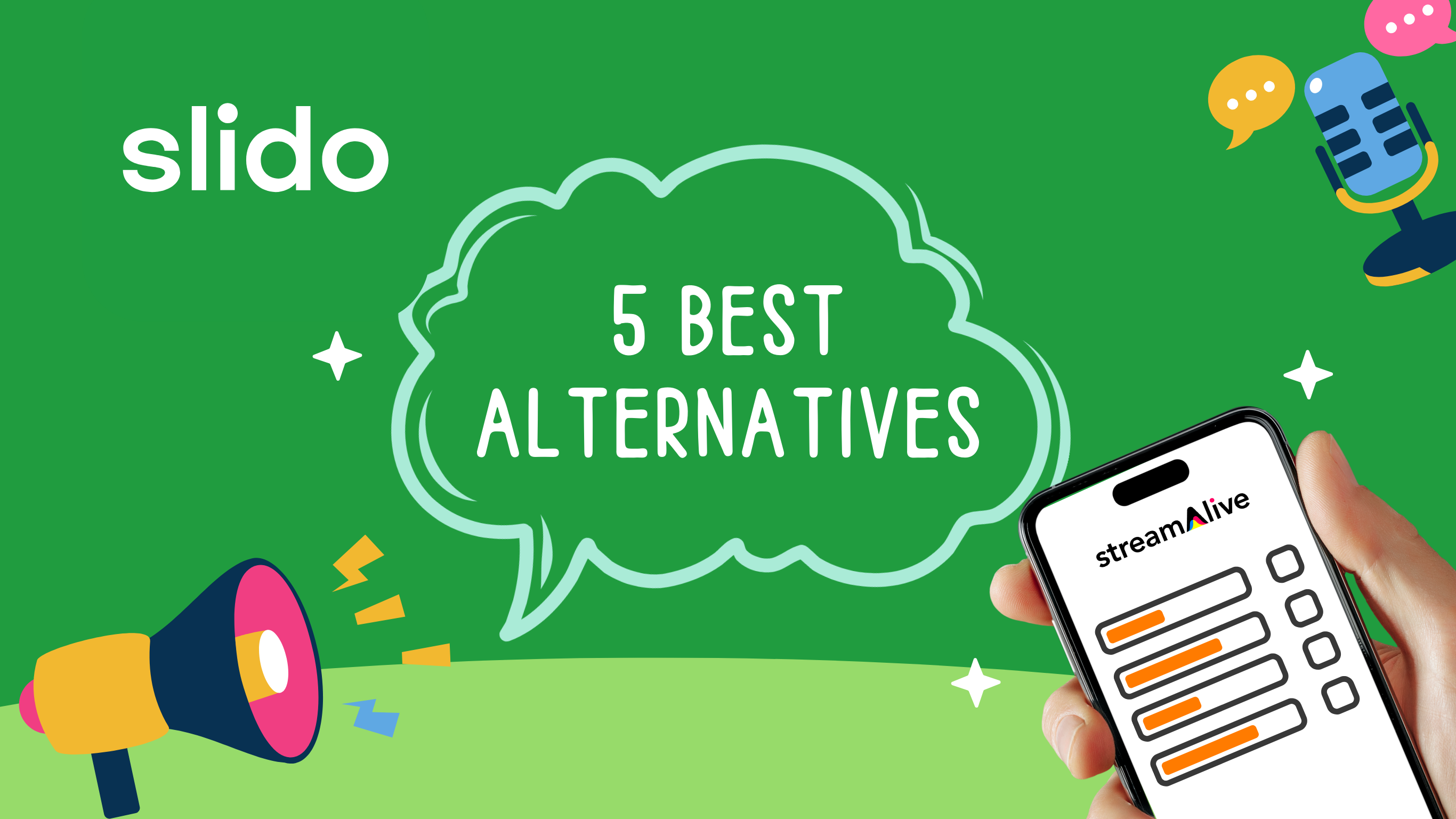Ever been in a meeting where the speaker’s droning on in the background and each attendee is either zoned out or deeply focused on anything else they get their hands on? I’ve sat in plenty of meetings, from webinars to online classes, where I’ve felt like that person.
When it comes to online meetings you can take from the comfort of your own home, it’s difficult to feel connected to your fellow attendees—both as a participant and a presenter. So, while everyone says that live events can be a great way to connect with people and share ideas—and that’s true—that’s only possible with a sense of community among your participants.

So, how do you go about creating that community? There are plenty of strategies that I’ve found to be the most successful from the many that I’ve attended from online school at odd hours of the night to my virtual internships. So, here’s a summary of what I like to call StreamAlive’s ten commandments for E.N.G.A.G.E.M.E.N.T.:
E. Everyone loves a good icebreaker
Start by asking everyone to share their name and where they're from, or you could have participants answer a fun question related to the event topic. With a simple activity like this, you can help participants get to know each other. Pro tip: If you have an ice breaker that people can answer as they enter your meeting instead of waiting, you can prevent them from zoning out before it’s even begun.
N. Nudge your attendees
Writing your words out lets you think them through. So, invite your participants to share their thoughts and experiences, and respond to their comments. With the chat function of your streaming platform, your participants can see how others are responding and hopefully feel more comfortable with sharing their own thoughts as well.

G. Generate questions every 5 minutes
They say that the best presenters ask questions every five minutes. There is a pattern to them: they start off easy, and slowly start to need more reflection. When the questions seem to become too tough, the presenter relapses to simpler questions to regain the attention of the participants and increase engagement. Read more about why they do so here.
A. Apply the principles of cognitive load
Cognitive load—the amount of information that working memory can hold at one time—can be stimulated by questions. Low cognitive load questions focus on personal facts, or facts about the audience member themselves that can’t be disputed and rarely need more thought than a quick glance around. Medium cognitive load questions ask more about the audience member’s opinions and act as a window into their personality. Here are some questions to ask your audience at your next livestream.
G. Got quizzes?
What better incentive is there to add a sense of accountability to your words than a short quiz? With the help of a quizzing tool, break the ice, create some healthy competition, and provide a fun way for participants to engage with the content. Bonus points if you can add in a small prize for the winner!

E. Everyone loves polls
So many streaming platforms have their own polling feature now. Why? Because polls are an easy way for people to begin participating. You can use them to gather feedback, check participants' understanding of the content, or just add a bit of fun to the event.
M. Move people around
Breakout rooms are a great way to facilitate small group discussions and enable participants to get to know each other on a more personal level. However, without the right build up, you may find a breakout room sitting in complete silence. So, you’ve pumped up the energy and the chat is flying by, assign participants to breakout rooms and give them a discussion prompt to get the conversation started.
E. Examine feedback like a detective
Every meeting needs opportunities for attendees to provide feedback throughout the event—if you’re doing something that isn’t helping others pay attention to you, give them a way to tell you that this is happening! That way, they’ll know that their opinions are valued too. You can ask participants to provide feedback on the event itself, the content, or even you as a presenter.
N. Networking, not working
Many people at your event are likely there to meet others with the same interests or goals as themselves. Consider providing opportunities for participants to network and connect with each other in the context of the event you’re hosting. This can look like a social media group that they can simply join, a place to share contact information that they can access once the event is over, or even just a networking session at the end of the event.

T. Tools are your friend
External tools are being created for a reason—they allow you to enhance the platform that already exists with something that is more specific to your own needs. For example, you can use board tools like Padlet to facilitate collaborative brainstorming or find a whole host of interactions to plan, track, and analyze engagement with an audience engagement platform like StreamAlive.
Ultimately, creating a sense of community in your live event is essential for its success. Whether you do so by bringing the in-person to the online or the online to the in-person, using these tactics can help you foster connections among your attendees and create memorable moments and takeaways.
Take them out for a spin, and good luck for your next event!







.svg.png)



